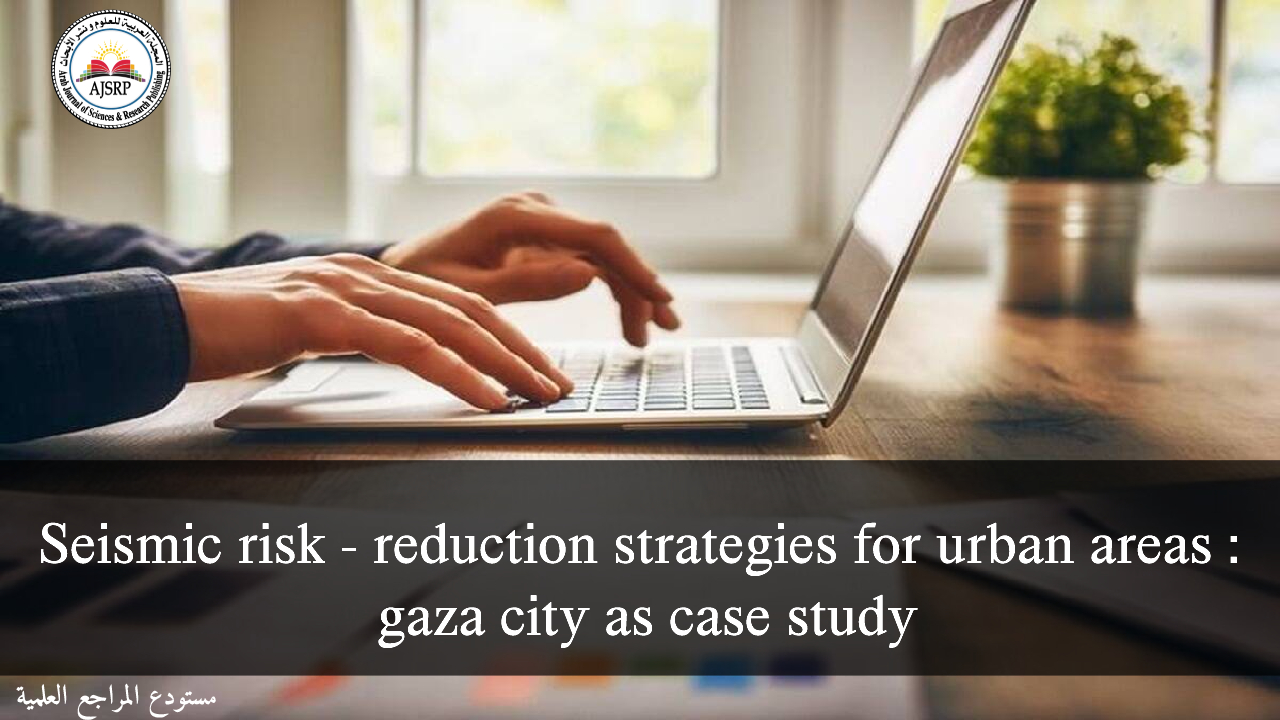seismic risk – reduction strategies for urban areas : gaza city as case study

تأليف: abdalla mohammed abu hamda(اعداد):: mamoun al qedra(مشرف مشارك):: mohammed arafa(مشرف)
اللغة: إنجليزي
النشر: غزة ( فلسطين ):المعد 2016
المكان: خانيونس-مكتبة الجنوب المركزية-مجموعات خاصة/خـانيونس
النوع: رسائل جامعية
عدد الصفحات: 143
المواضيع: construction engineering – gaza strip:: الهندسة المدنية – غزة
رقم التصنيف: 624.0956442
الرقم العام: 1343229
العنوان : seismic risk – reduction strategies for urban areas : gaza city as case study
ABSTRACT
Earthquakes expected to occur in Palestine and near region countries, based on studies conducted in the region countries are no more than 6 degrees or 7 degrees on the Richter scale, if its center is north or South of the Dead Sea. This strength general class is classified as moderate or relatively strong.
This research work introduces an approach for assessment of existing buildings in Gaza city against seismic hazards.
The proposed approach is simple, straightforward and based on studies that deal with seismic requirements for Gaza city building in terms of resisting expected seismic action. There are several factors affecting the overall vulnerability of a structure in addition to its construction type.
These factors are generally applicable to all types of structures. three full area, from Gaza city were investigated by their site conditions, regularity, configuration, structural and architectural elements of buildings, number of floors, main street width, importance of building, use of building, situation of enters of building, situation of building, finishing material,
horizontal irregulars, vertical irregulars, soft story, short column, contriver, concentration of stress due to complex plans, thin building, building design to resistance earthquake, type of foundation soil adjacency and etc.
The collected data and it`s analysis were conducted according to European Macro seismic scale 1998 (EMS). The results of applying the approach show a relation between seismic vulnerability of existing buildings and damage degree. Assigned vulnerability classes show that 64% of total buildings are categorized as class (C) and about 23% of class (D), which reflects high seismic vulnerability of existing building in Gaza city.
The proposed approach has been verified using the detailed evolution methods and showed convergence in the results.
Several scenarios have been prepared for the expected damage based on earthquake damages defined in EMS 98. The results are expected to shed the light on the importance of carrying out similar studies on public buildings as well as essential facilities in Gaza city.

[embeddoc url=”https://ajsrp.com/wp-content/uploads/2021/11/seismic-risk-reduction-strategies-for-urban-areas-gaza-city-as-case-study_compressed.pdf” download=”all” viewer=”google”]

طالع أيضا
المصدر




